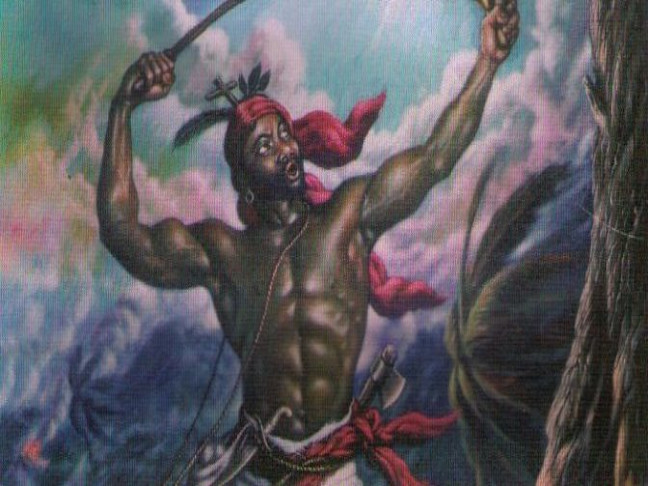
Revolutionary Trigger
May 16, 2017
Call to Arms
May 19, 2017By Satish Sekar © Satish Sekar (July 4th 2013. Updated on May 15th 2017)
Hero or Anti-hero
Simón Bolívar, dubbed by many the Liberator, was undoubtedly one of the great leaders of the nineteenth century independence movement. He occupied pride of place in Venezuela’s National Pantheon. Built in 1874 it serves as a testament to that nation’s liberation. Other heroes and heroines were relegated to the aisle, although some tombs lie empty. Either the remains have not been located, or in one case request for repatriation has been refused.
That tomb is the one next to Bolívar, intended for his most trusted General, Antonio José de Sucre y Alcalá. Ecuador has refused three requests from Bolivia and one from Venezuela for Sucre’s remains to be repatriated – it won’t happen. His tomb occupies pride of place in the Cathedral in Quito. He is one of Ecuador’s national heroes, despite only spending a small part of his life there.
Among the remains that have not been discovered are those of the executed General Manuel Piar and the leader of the first independence struggle of Venezuela and Bolívar’s mentor, Francisco de Miranda – a man Bolívar betrayed to captivity and death. Nevertheless, the late President of Venezuela Hugo Chávez had an elaborate mausoleum constructed that was unveiled in May 2013. Bolívar’s remains have been reinterred in the Mausoleum. But how justified is his reputation as South America’s Liberator?
Miranda’s Ghost
Bolívar served his apprenticeship under the first of the great Venezuelan patriots Francisco de Miranda – a colourful character, no doubt. Miranda’s first attempt at liberation was a dismal failure. His leadership of the First Republic failed too. Miranda decided to flee – a decision that incensed Bolívar among others. They captured Miranda. Bolívar and others handed him over to the Spanish, not caring what happened to him.
Their decision condemned Miranda to die in exile in jail and to be buried unidentified in a mass grave. With Miranda out of the way, there was a vacuum in the revolutionary independence movement. Bolívar was one of many vying for control of the movement. He assumed the leadership of a faction of the independence movement, which lacked unity and strong leadership – essential traits in a liberation struggle.
Bolívar, like the others was ruthless when he needed to be. In reality the liberation movement consisted of warlords vying with each other as much as the Spanish. There was little to separate Bolívar from the others. The difference was yet another man he betrayed, but in a different way to Miranda – Haiti’s President Alexandre Pétion.
The Liberator
In 1815 and 1816 Bolívar’s liberation campaign was undistinguished at best. In reality it had failed. Had Bolívar been captured or killed at this point, history would have forgotten him. He was saved from obscurity by an implacable opponent of slavery and contributor to many liberation struggles throughout Latin America.
Pétion, at this stage was by far the more successful revolutionary. Born mixed race, but darker-skinned than his father Pascal Sabès wanted, Pétion experienced both privilege and prejudice at an early age. He was denied his father’s name, but received an education and training in France. As a young man he returned to Saint-Domingue (Haiti) and fought under General André Rigaud on the losing side in the War of Knives – the Haitian Civil War – returnintg in 1802. Realising that he had been duped – Napoléon intended to deny them rights and restore slavery, Pétion switched sides, joining the revolution under Jean-Jacques Dessalines. Haiti became independent in 1804, but Dessalines proved to be a tyrant.
Pétion and Henri Christophe conspired against the despotic Dessalines. The Emperor Jacques I was assassinated in October 1806. The following year Pétion had become President of Southern Haiti, Christophe had himself crowned King Henry I. The two remained at loggerheads, but while Christophe established a feudal regime, Pétion favoured a Presidential system. Despite never being a slave, Pétion proved to be the greater opponent of that institution.
Larger than Life
President Pétion was a larger than life character. When an assassin tried to kill him, Pétion interceded, shut everyone but the man out of the room and spoke to him at length. Pétion convinced him to become one of his most devoted supporters.
Meanwhile, destitute and desperate, Bolívar was at his wits end. He had spent his fortune trying and failing to liberate Venezuela. He needed help. Pétion recognised the revolutionary spark in Bolívar – the potential to become a great independence fighter – so he supported Bolívar by offering troops, ships, arms and resources. A grateful Bolívar set sail to resume the fight, but lost it all and had to return to beg further help of Pétion, which the Haitian President provided again.
Pétion demanded just one thing in return – a promise that Bolívar would abolish slavery everywhere he liberated. Bolívar readily agreed. He would later renege on his word to Pétion, but his success depended on utilising Miranda’s idea with the one thing that Miranda had lacked – the resources to hire experienced fighters who had cut their teeth in the Napoléonic wars.


